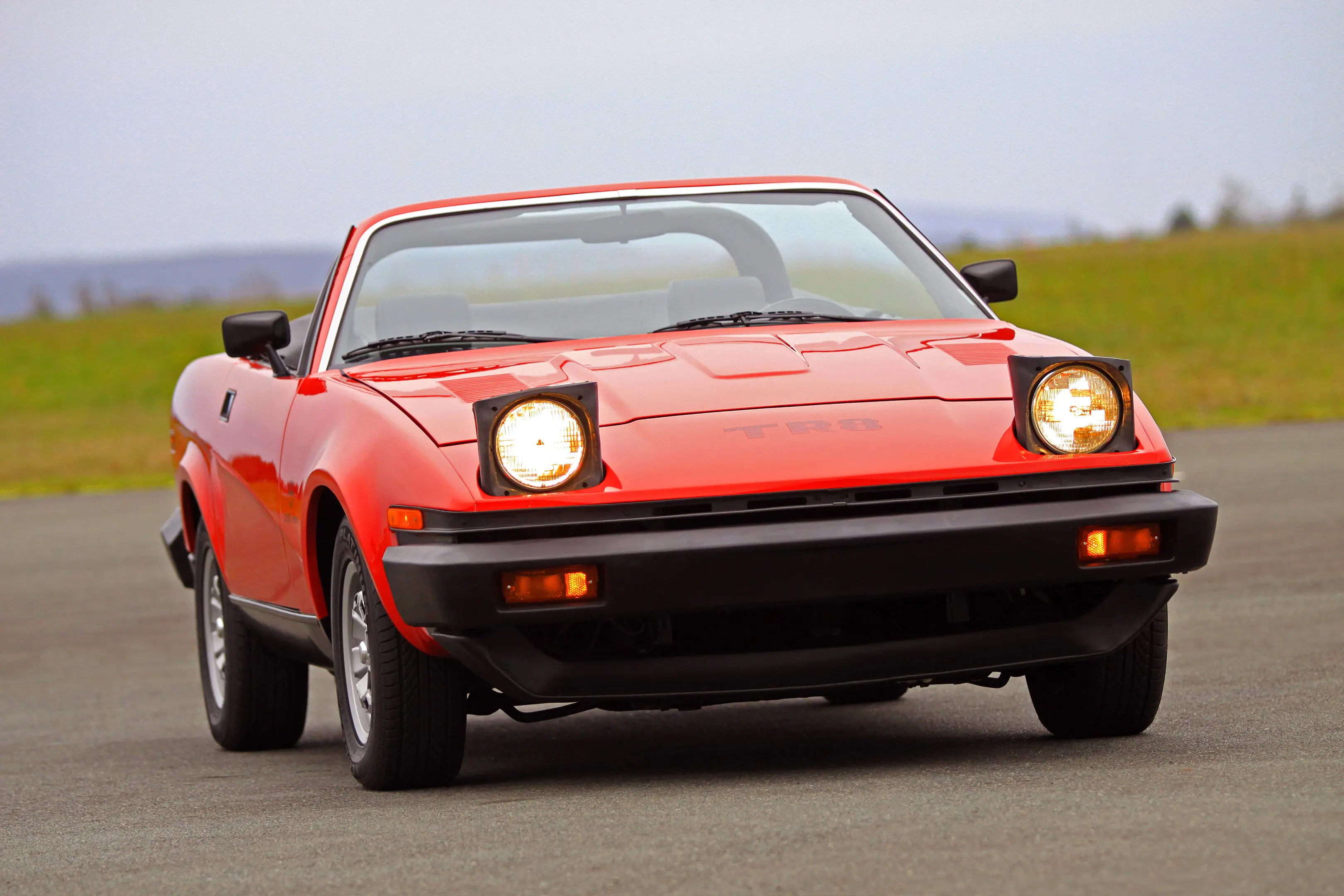THE TRIUMPH TR8 REMEMBERED
12 May 2022
Forty one years ago, production ended of one of the great post-war British sports cars. One US motoring journalist wrote, ‘I didn’t think they’d ever make cars like that again, but the Triumph TR8 reminds me why I fell in love with cars in the first place’. Countless other enthusiasts feel the same way.
BL considered a V8–powered version of the forthcoming TR7 as early as 1972, together with highly tempting Targa, 16-valve Dolomite, Lynx 2 + 2 and even MG-badged versions. However, the all-too-familiar Leyland financial issues resulted in considerable delays, and it would not be until 1978 that the concern evaluated some 145 prototype coupes.

Meanwhile, the TR7, which debuted in January 1975, became available with a Michelotti-styled convertible body four years later. Such a machine powered by the famous 3.5-litre engine would surely appeal in Triumph’s crucial US export market, and sales of the TR8 commenced in mid-1979. As compared with its 2-litre stablemate, ‘the most powerful TR ever’ featured power steering and a different axle ratio.
The top speed of the TR8 was an impressive 125 mph, with 0-60 in a fraction over eight seconds. Optional extras included Borg Warner three-speed speed automatic transmission, air-conditioning and, for those journeys along Route 66, an AM/FM stereo radio with either an eight-track or a cassette player. Californian models featured twin Zenith-Stromberg carburettors with Bosch L-Jetronic injection for other states.
The US motoring press were delighted by the latest Triumph. Road & Track stated, “You aren’t going to trace down a Sunbeam Tiger or older Corvette after all, because you can now buy a brand new V8 roadster, one that will outrun most every other sports sedan and sports car this side of $15,000’. Car and Driver featured the TR8 on their front cover and went on to hail it as ‘Nothing less than the reinvention of the sports car’. They also noted how its torque was “80% more than the TR7, 71%than the RX-7, 25% than the Datsun 280Z and 22% more than the Porsche 924 Turbo”.
Unfortunately for BL, the TR8 was launched in the aftermath of the 1979 Oil Crisis, and it suffered from poor build quality. It was also expensive, costing $2,000 more than the 280ZX. For 1981, the fuel injection was standard across the USA, and your local dealer could offer significant discounts. Furthermore, the TRs were manufactured when the words ‘Leyland’ and ‘utter chaos’ were synonymous. Triumph made the first models at the Speke plant before production moved to Canley in 1978 and finally to Solihull in 1980.
Leyland hoped to commence UK sales in March of 1981, but barely a handful of RHD models left the factory before the demise of the TR8 later that year. Naturally, any surviving example is much sought after, for this is a highly desirable machine. To quote Motor Trend magazine of 1980: “The TR8 is the finest British sports car I have had the pleasure to drive, one that, by itself, could change the entire image of United Kingdom industry and workmanship. It is a fun car that fills a need in the marketplace for a performance sports car. The TR8 can singlehandedly rekindle man’s love for the automobile.”
What else needs to be said?
